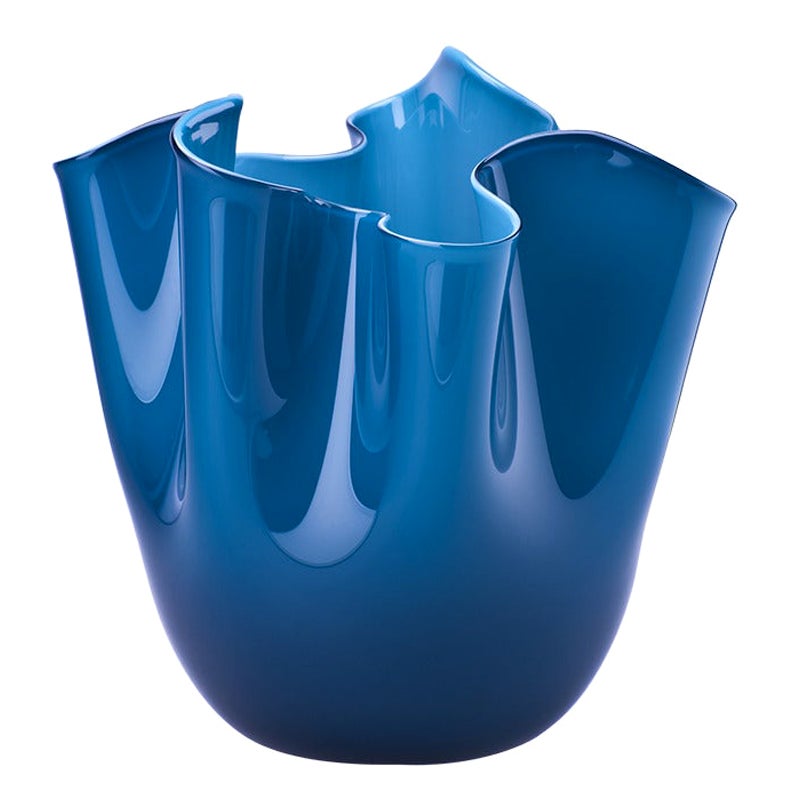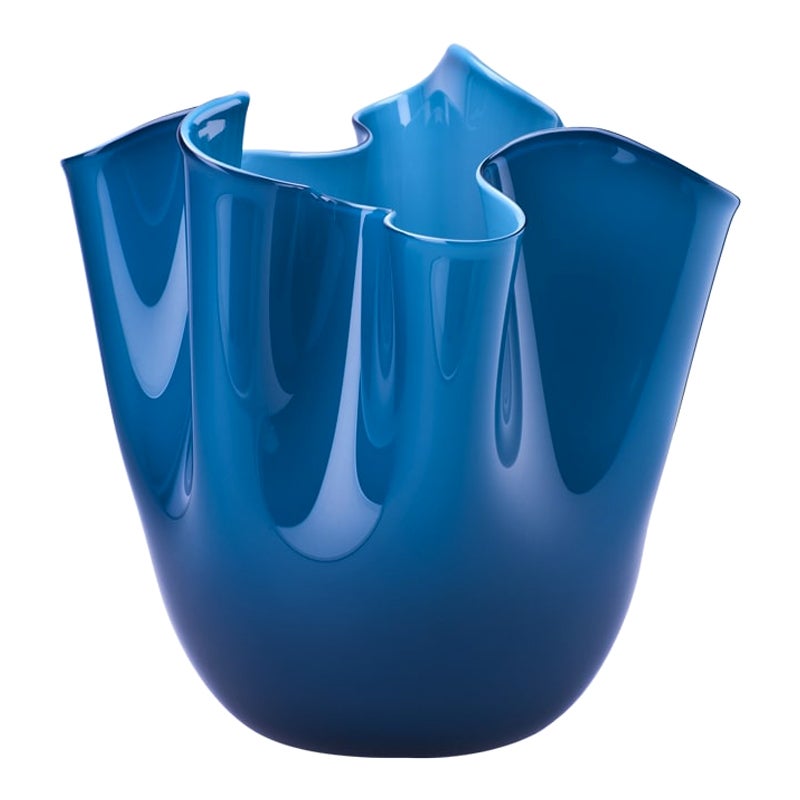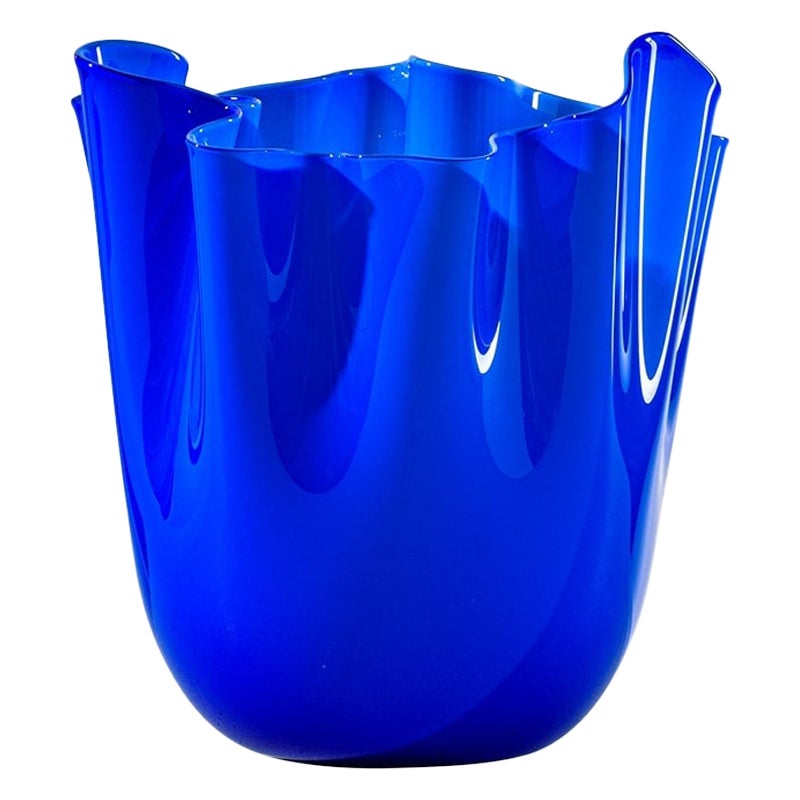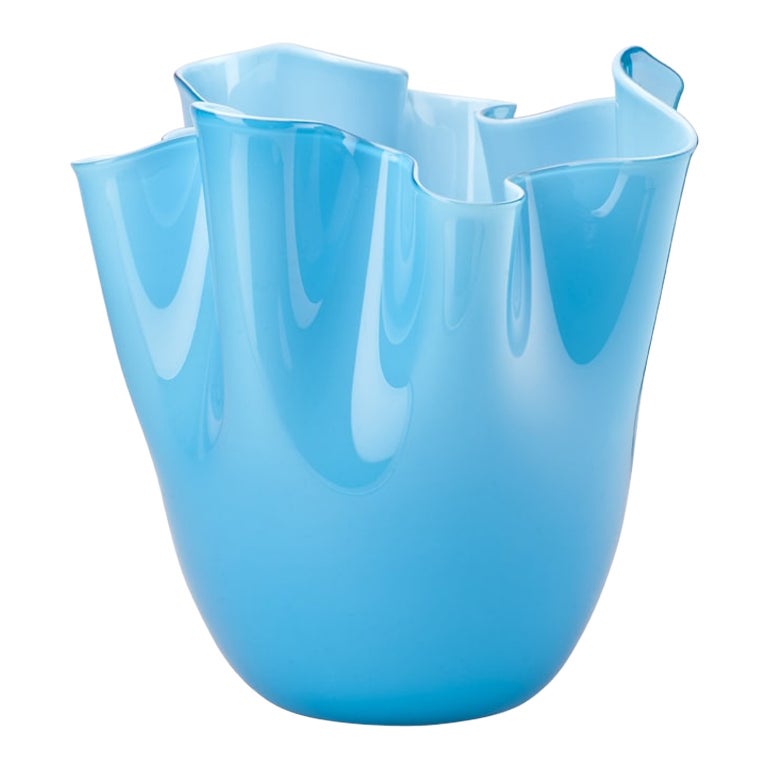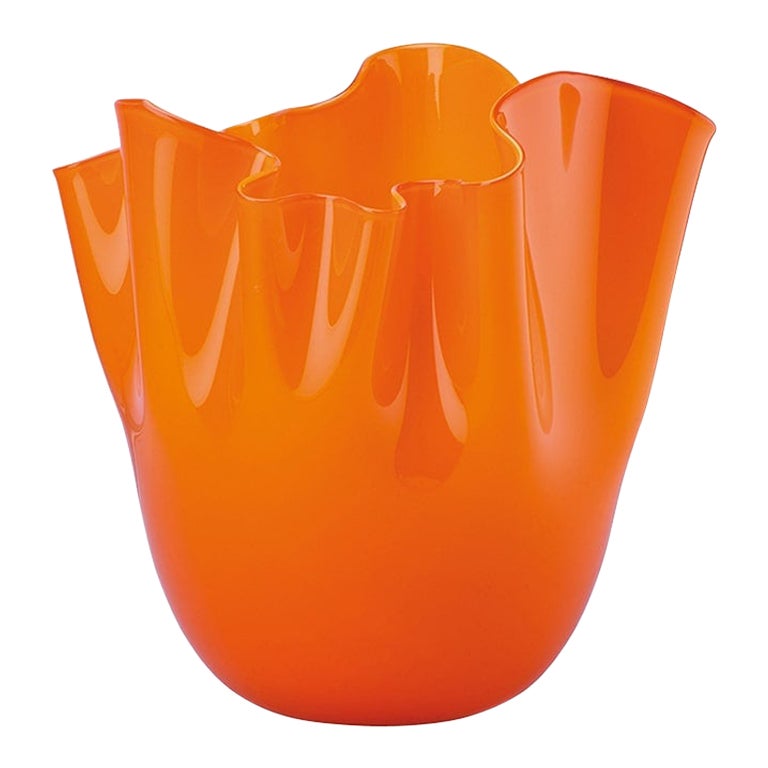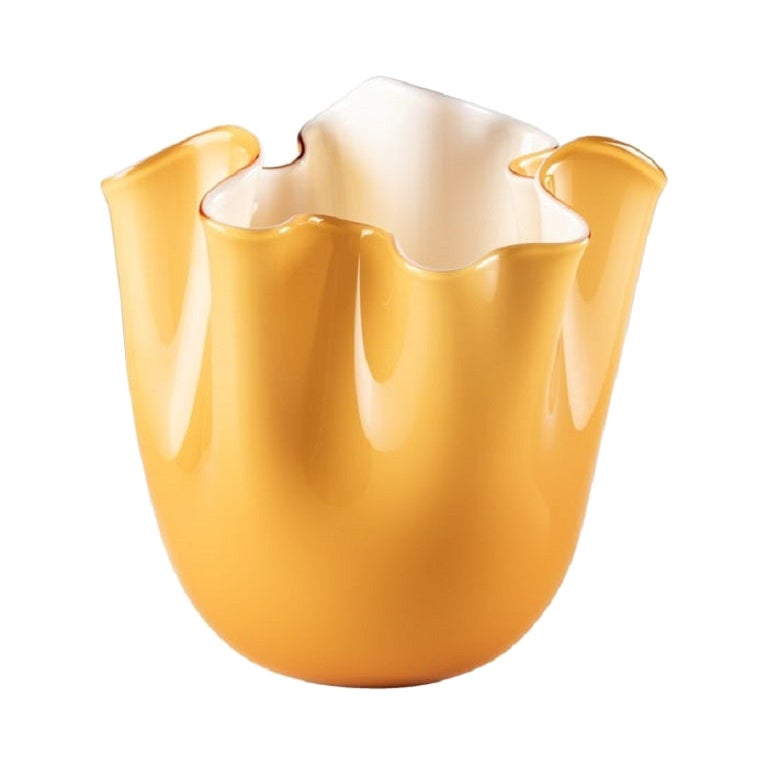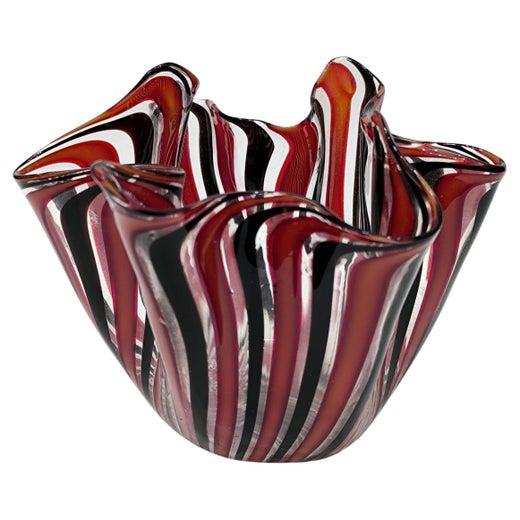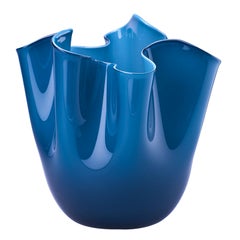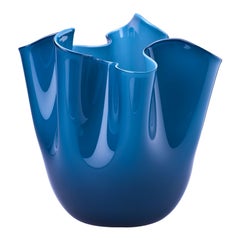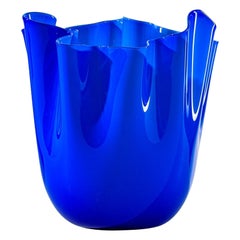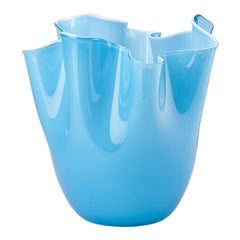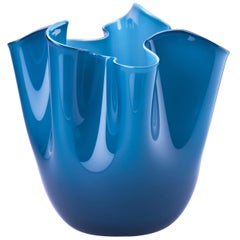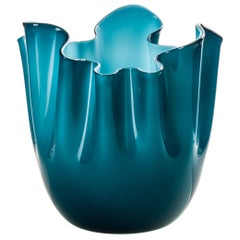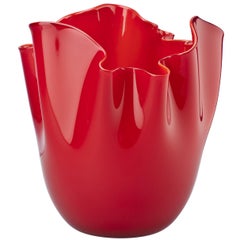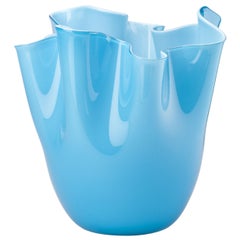21st Century Fazzoletto Small Glass Vase in Horizon by Fulvio Bianconi E Paolo
About the Item
- Creator:Venini (Manufacturer),Fulvio Bianconi & Paolo Venini (Designer)
- Dimensions:Height: 5.32 in (13.5 cm)Diameter: 5.32 in (13.5 cm)
- Materials and Techniques:
- Place of Origin:
- Period:
- Date of Manufacture:21st Century
- Production Type:New & Custom(Current Production)
- Estimated Production Time:6-7 weeks
- Condition:
- Seller Location:murano, IT
- Reference Number:Seller: 700.041stDibs: LU5763231123992
Fulvio Bianconi & Paolo Venini
Glassware designer Paolo Venini’s best creations are thought to be his two-color Clessidre hourglasses, produced from 1957 onward, and the Fazzoletto (“handkerchief”) vase, designed with Fulvio Bianconi in 1949.
Beginning in the 1930s — and throughout the postwar years especially — Venini & Co. played a leading role in the revival of Italy’s high-end glass industry, pairing innovative modernist designers with the skilled artisans who created extraordinary chandeliers, sconces and other lighting in the centuries-old glass workshops on the Venetian island of Murano.
While the company’s co-founder, Paolo Venini (1895–1959), was himself a highly talented glassware designer, his true genius was to invite forward-thinking Italian and international designers to Murano’s hallowed workshops to create Venini pieces — among them Gio Ponti, Massimo Vignelli, Finnish designer Tapio Wirkkala, Thomas Stearns of the United States and Fulvio Bianconi.
For a range of work that includes everything from illustrating thousands of books and other publications to his role as a visionary glassmaker, Bianconi is remembered as one of the most innovative cross-disciplinarian artists of the postwar era. He was an apprentice decorator in his youth at the Murano glass furnaces, where he first discovered the art of glassmaking.
Following the war, Bianconi went to work designing perfume bottles for the Milan perfume house Giviemme at Venini, where he worked with glass masters Ermete and Arturo Biassuto. Bianconi became one of Venini’s most influential glass designers — and was appointed artistic director following Carlo Scarpa — known for his bold use of color, modern style and unique, playful designs.
Among Bianconi's most iconic works in glass are the series of glass figures from the Commedia dell’Arte, his remarkably fluid bowls, and the patchwork “Pezzato” technique — his colorful vases created with this technique feature patterns that resemble those of a patchwork quilt. Works made in this fashion caused a sensation at the 25th Venice Biennale in 1950. Bianconi worked with several other glass studios, including Cenedese in 1954 and Vistosi in 1963, creating decorative vessels, bowls, hourglasses and sculptures.
Paolo Venini trained and practiced as a lawyer for a time, though his family had been involved with glassmaking for generations. After initially buying a share in a Venetian glass firm — he and antiques dealer Giacomo Cappellin established Vetri Soffiati Cappellin Venini & C. in 1921 — Venini took over the company as his own in 1925, and under his direction, it produced mainly classical Baroque designs.
In 1932, Venini hired the young Carlo Scarpa— who would later distinguish himself as an architect — as his lead designer. Scarpa, working in concert with practiced glass artisans, completely modernized Venini, introducing simple, pared-down forms; bright primary colors; and bold patterns such as stripes, banding and abstract compositions that utilized cross sections of murrine (glass rods).
Bianconi’s glassworks are held in museum collections worldwide, including London’s Victoria and Albert Museum, the Museum of Modern Art and the Corning Museum of Glass in New York.
Noteworthy and highly collectible vintage Venini works include Ponti’s dual-tone stoppered bottles (circa 1948); rare glass sculptures from the Doge series by Stearns, the first American to design for the firm; Vignelli’s striped lanterns of the 1960s; the Occhi vases with eyelet-shaped patterns by Tobia Scarpa (son of Carlo); and, with their almost zen purity, the Bolle (“bubbles”) bottles designed by Wirkkala in 1968.
Find antique Paolo Venini and Fulvio Bianconi serveware, vases and other decorative objects on 1stDibs.
Venini
Beginning in the 1930s — and throughout the postwar years especially — Venini & Co. played a leading role in the revival of Italy’s high-end glass industry, pairing innovative modernist designers with the skilled artisans who created extraordinary chandeliers, sconces and other lighting in the centuries-old glass workshops on the Venetian island of Murano.
While the company’s co-founder, Paolo Venini (1895–1959), was himself a highly talented glassware designer, his true genius was to invite forward-thinking Italian and international designers to Murano’s hallowed workshops to create Venini pieces — among them Gio Ponti, Massimo Vignelli, Finnish designer Tapio Wirkkala, Thomas Stearns of the United States and Fulvio Bianconi.
Paolo Venini trained and practiced as a lawyer for a time, though his family had been involved with glassmaking for generations. After initially buying a share in a Venetian glass firm — he and antiques dealer Giacomo Cappellin established Vetri Soffiati Cappellin Venini & C. in 1921 — Venini took over the company as his own in 1925, and under his direction, it produced mainly classical Baroque designs.
In 1932, Venini hired the young Carlo Scarpa— who would later distinguish himself as an architect — as his lead designer. Scarpa, working in concert with practiced glass artisans, completely modernized Venini, introducing simple, pared-down forms; bright primary colors; and bold patterns such as stripes, banding and abstract compositions that utilized cross sections of murrine (glass rods).
Paolo Venini’s best designs are thought to be his two-color Clessidre hourglasses, produced from 1957 onward, and the Fazzoletto (“handkerchief”) vase, designed with Bianconi in 1949. Bianconi’s masterworks are considered by many to be his Pezzato works — colorful vases with patterns that resemble those of a patchwork quilt.
Other noteworthy and highly collectible vintage Venini works include Ponti’s dual-tone stoppered bottles (circa 1948); rare glass sculptures from the Doge series by Stearns, the first American to design for the firm; Vignelli’s striped lanterns of the 1960s; the Occhi vases with eyelet-shaped patterns by Tobia Scarpa (son of Carlo); and, with their almost zen purity, the Bolle (“bubbles”) bottles designed by Wirkkala in 1968.
With these works — and many others by some of the creative titans of the 20th and 21st centuries — Venini has produced one of the truly great bodies of work in modern design.
Find antique and vintage Venini chandeliers, serveware, table lamps, decorative objects and other furniture on 1stDibs.
- ShippingRetrieving quote...Shipping from: murano, Italy
- Return Policy
More From This Seller
View All21st Century and Contemporary Italian Vases
Glass
21st Century and Contemporary Italian Vases
Glass
21st Century and Contemporary Italian Vases
Glass
21st Century and Contemporary Italian Vases
Glass
21st Century and Contemporary Italian Vases
Glass
21st Century and Contemporary Italian Vases
Glass
You May Also Like
21st Century and Contemporary Italian Modern Vases
Art Glass
21st Century and Contemporary Italian Modern Vases
Art Glass
21st Century and Contemporary Italian Modern Vases
Art Glass
21st Century and Contemporary Italian Modern Vases
Art Glass
21st Century and Contemporary Italian Modern Vases
Art Glass
21st Century and Contemporary Italian Modern Vases
Glass
